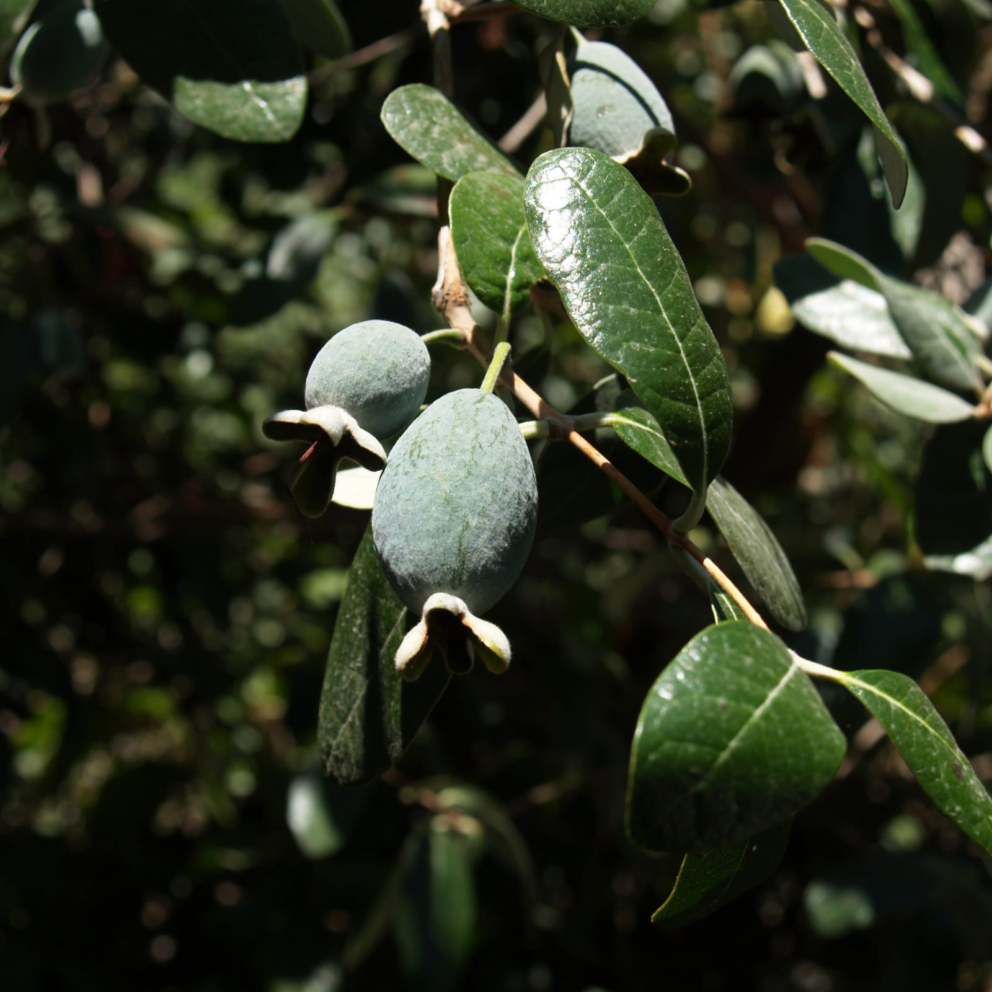
Pineapple guava
Acca sellowiana
Family and description
Belonging to the Myrtaceae family, genus Acca, Acca sellowiana is a dense, evergreen shrub with a grey trunk that can reach 5 m in height.
The leaves vary from ovate-oblong to elliptical, with short petioles, and are leathery, greyish on the underside, and opposite in arrangement.
The white flowers appear between May and June, arranged singly or in clusters in the leaf axils. They have fleshy petals and long red stamens.
The fruit, a berry, appears in autumn and is ellipsoid, juicy and green. Each fruit contains between 40 and 100 hard, white seeds.
Origin and habitat
The pineapple guava, also known as feijoa or guavasteen, is native to Brazil and Uruguay, where it is found in araucaria forests.
It tolerates drought, frost and salt spray, but cannot withstand intense winds. It prefers deep clay soils. The species can occur up to 1000 metres above sea level, with greater viability from 400 metres upwards.
Uses and curiosities
Propagated from cuttings, grafting or seeds.
It is used as an ornamental plant due to its beautiful flowering and can be planted in hedges. The flower petals, fruit and seeds are edible and are used to make salads, jams, ice creams and juices. The granulated pulp of the fruit also serves as an exfoliant. It possesses therapeutic, antioxidant, antibacterial and anti-inflammatory properties. The species is also appreciated by bonsai amateurs.
The name “feijoa” was given in honour of the botanist João da Silva Feijó.
